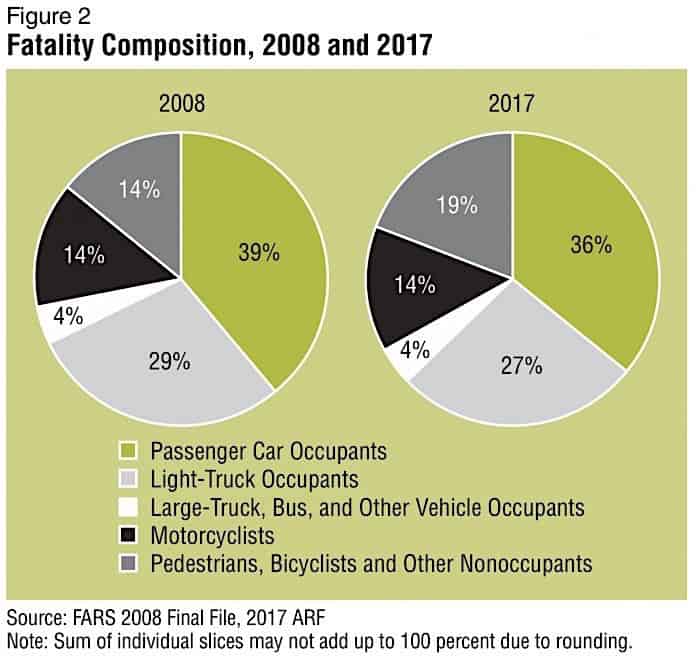There were more fatal crashes reported last year that involved all types of buses and motor coaches, NHTSA officials announced today when it released preliminary figures from its annual Fatality Analysis Reporting System, though school-bus-specific data was not yet available.
There were 234 fatal crashes involving buses and motor coaches last year, seven more than recorded in 2016 by FARS, noted NHTSA Deputy Administrator Heidi R. King during a phone call on Wednesday with reporters.
However, an analysis of local news reports nationwide by School Transportation News indicates that five students were killed in on-board school bus incidents during the 2017 calendar year, which is on a par with the annual average.
FARS relies on state and local police reports of traffic crashes. It only tracks fatalities occurring on the scene or within five days of the crash.
Overall data released by NHTSA revealed that 2017 highway fatality tallies for all categories fell slightly to 37,133, a 2 percent decrease from 2016. This year’s figure followed two consecutive years of large increases.
Pedestrian fatalities also decreased slightly.
NHTSA said preliminary estimates for the first six months of 2018 appear to show the downward trend of overall fatalities continuing.
“While the decline is welcome news, we must not lose sight of the fact that 37,133 people lost their lives in motor vehicle crashes in 2017. Every life lost is a tragedy,” commented U.S. Transportation Secretary Elaine Chao.
In general, the statistics painted a mixed picture, especially when compared to other years, but the majority of categories reported good news.
Fatalities for 2017 compared to those in 2008 showed practically the same four-percent proportion for the Large-Truck, Bus and Other Vehicle Fatalities category, compared to those for the categories of motorcyclists, passenger car occupants, light truck occupants, pedestrians/bicyclists and other nonoccupants.
Other findings included:
- Pedestrian fatalities declined about 2 percent, the first decline since 2013
- For the second year in a row, more fatalities occurred in urban areas than rural areas
- Combination trucks involved in fatal crashes increased by 5.8 percent
- Vehicle miles traveled (VMT) increased by 1.2 percent from 2016 to 2017
- The fatality rate per 100 million VMT decreased by 2.5 percent, from 1.19 in 2016 to 1.16 in 2017
SUV and large truck fatalities definitely increased, despite there being 673 fewer fatalities in 2017 than 2016 in the following key categories:
- Passenger car occupants (1.1 percent decrease)
- Van occupants (5.8 percent decrease)
- Pickup truck occupants (4.5 percent decrease)
- Motorcyclists (3.1 percent decrease)
- Pedestrians (1.7 percent decrease)
- Pedal-cyclists (8.1 percent decrease)
- Alcohol-impaired-driving fatalities (1.1 percent decrease)
- Speeding-related fatalities (5.6 percent decrease)
Meanwhile, fatalities increased in 2017 compared to 2016 in these categories:
- SUV occupants (3.0 percent increase)
- Crashes involving large trucks (9.0 percent increase)
- Combination trucks (tractor-trailers) involved (5.8 percent increase)
- Single-unit straight trucks involved (18.7 percent increase)














